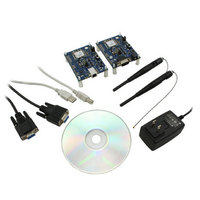DVK-PRM112 Laird Technologies, DVK-PRM112 Datasheet - Page 28

DVK-PRM112
Manufacturer Part Number
DVK-PRM112
Description
KIT FOR PRM112
Manufacturer
Laird Technologies
Series
FlexRF™r
Type
Transceiver, FHSSr
Specifications of DVK-PRM112
Frequency
2.4GHz
Output Power
50 mW
Antenna
U.FL Coaxial
Silicon Manufacturer
Laird Technologies
Kit Application Type
Communication & Networking
Application Sub Type
RF Module
Kit Contents
2x RF Module, 2x Adapter Board, CD, 2x AC Power Adapters, 2x DB9
Rohs Compliant
Yes
For Use With/related Products
PRM112
Lead Free Status / RoHS Status
Lead free / RoHS Compliant
Lead Free Status / RoHS Status
Lead free / RoHS Compliant, Lead free / RoHS Compliant
Available stocks
Company
Part Number
Manufacturer
Quantity
Price
Company:
Part Number:
DVK-PRM112
Manufacturer:
LAIRD
Quantity:
2
LT2510
Wireless Module
CONFIGURING
THE LT2510
25 www.lairdtech.com
The LT2510 can be configured using AT Configuration Commands. These commands can be issued only in
Command Mode. Command Mode can be entered by setting the CMD/Data pin of a transceiver Low or by issuing
the Enter AT Command.
AT COMMANDS
There are four types of configuration supported by the LT2510; On-the-Fly commands for dynamic reprogramming
of running memory, EEPROM commands for making persistent changes to EEPROM, Utility commands for dealing
with Command Mode and Status Commands for querying the radio for information. When in Command Mode,
the RF is still active and incoming RF packets are queued in the radio until Command Mode has been exited. If in
Command Mode via the CMD/Data pin and Command/Data RX Disable has been disabled, incoming RF packets
will not be queued and will be sent to the host immediately.
AT Commands sent to the LT2510 must still adhere to the interface guidelines specified by the Interface Timeout
and RF Packet Size. For this reason, standard terminal emulators, such as HyperTerminal, cannot be used to
configure the LT2510. Manually typing AT Commands will cause the Interface Timeout to be reached between
characters and the command will be discarded if already in Command Mode or transmitted if not. AT commands
should be issued either with the Laird Technologies OEM Configuration Utility or sent directly from a microcontroller
or other host. When an invalid command is sent, the radio discards the data and no response is sent to the OEM
Host. Table 8 below shows a quick summary of the basic configuration and diagnostic commands available on the
LT2510. For detailed command information, please refer to the command descriptions immediately following the
Quick Reference Table.
On-The-Fly Control Commands
The LT2510 transceiver contains memory that holds many of the parameters that control the transceiver operation.
Using the On-the-Fly command set allows many of these parameters to be viewed and changed during system
operation. Because the memory these commands affect is dynamic, when the transceiver is reset, these parameters
will revert back to the settings stored in the EEPROM.
EEPROM Configuration Commands
Two Commands are available to read and write the EEPROM of the radio. These commands are very powerful as
they can control the entire configuration of the radio. They should be used with caution as overwriting reserved
areas of memory can adversely affect the operation of the radio. The radio must be reset for any changes to the
EEPROM to take affect.
Utility Commands
Utility Commands are used to enter and exit AT Command Mode and to reset the radio.
Status Commands
Status Commands are used to query the radio for information. Status commands can be used to poll GPIOs, ADCs
or to retrieve information about the state of the network. Status commands do not affect the operation of the
transceiver aside from being in Command Mode.
Laird Technologies



















